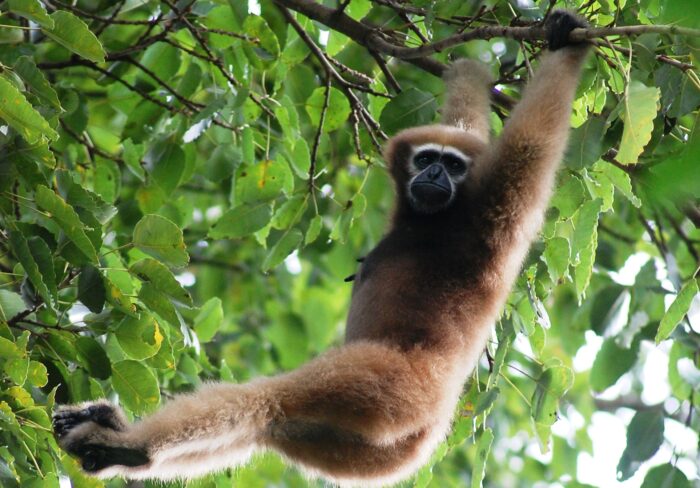The hoolock gibbons are three species of the gibbon family found in eastern Bangladesh, Northeast India, Myanmar and Southwest China.
The species are as follows:
- Western hoolock gibbon, (Hoolock hoolock)
- Eastern hoolock gibbon, (Hoolock leuconedys)
- Skywalker hoolock gibbon, (Hoolock tianxing)
This article will further give details about the Hoolock Gibbons within the context of the Civil Services Examination.
Characteristics of the Hoolock Gibbons
Hoolock are one of the largest species of the Hoolock genus, coming at second after the siamang. They are 90 cm in size and weigh about 6 to 9 kg. Both the males and females are of the same size, but differ in terms of colouring: the males are black in colour with white brows while the females are grey-brown. The rings around their eyes and mouths give them a mask-like appearance.
To know more about Biodiversity in general, visit the linked article.

Behaviour and Habitat
The gibbons are active during the day and arboreal in nature (it refers to the locomotion of animals on trees). The Hoolock Gibbons form monogamous relationships that also mark territories. Their calls help in locating family members and repelling challengers to their territory. The diet of the gibbons consist of fruits, insects and leaves.
The hoolock gibbons are found in the south of Brahmaputra and north and east of the Dibang Rivers. Its range in India extends into the all the northeastern states of Assam,Manipur, Mizoram, Nagaland, Meghalaya, Arunachal Pradesh and Tripura.
Hoolock Gibbons- Download PDF Here
Classification of Hoolock Gibbons
The classification of the hoolock gibbons have changed constantly over the last few years. They were first classified under the genus Hylobates, except for the siamang.
A new subspecies of the western hoolock gibbon is the Mishmi Hills hoolock gibbon (Hoolock hoolock mishmiensis). It was recently discovered in north east India
For notes on UPSC Environment and Ecology, visit the linked article.
FAQ about Hoolock Gibbons
Which is the well known sanctuary of the Hoolock Gibbons?
What is the average lifespan of Hoolock Gibbon?
What is the conservation status of the Western hoolock gibbon and the Eastern hoolock gibbon?
For more information about upcoming Government Exams, visit the linked article. More exam-related preparation materials will be found through the links given below:
Related Links
Comments